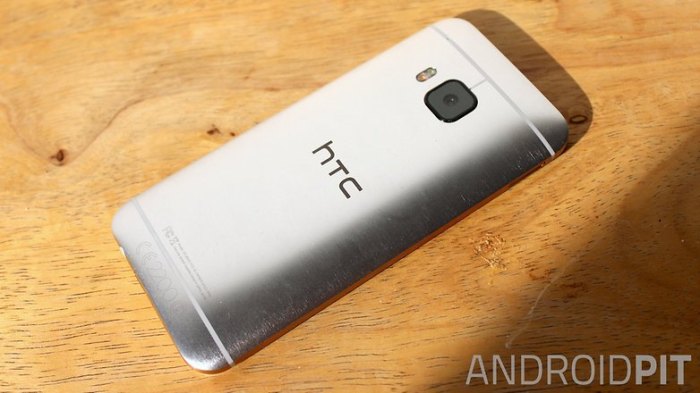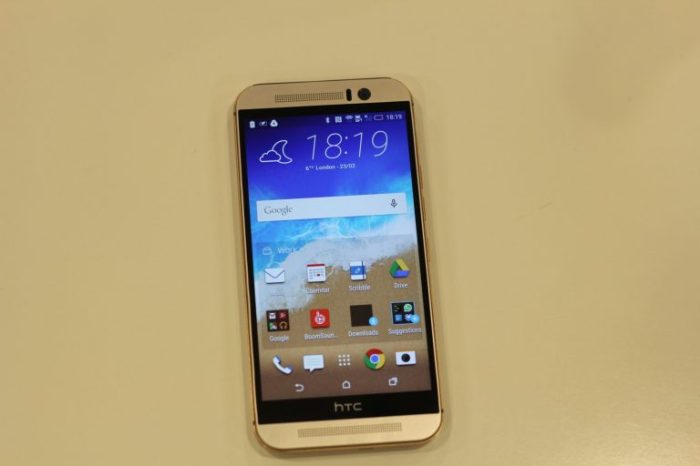HTC One M9 Overheating History
The HTC One M9, released in 2015, was a flagship smartphone that faced significant criticism for overheating issues. Users reported the device getting uncomfortably hot during various tasks, leading to concerns about battery life, performance, and even potential damage.
Initial Reports and Complaints
Reports of overheating issues with the HTC One M9 started emerging soon after its launch in March 2015. Users on online forums and social media platforms shared their experiences, describing the phone becoming uncomfortably hot during everyday activities like browsing the web, playing games, or even just making phone calls. These initial reports were often accompanied by complaints about the phone’s performance being affected, with apps crashing or the device slowing down.
Timeline of Overheating Issues
- March 2015: Initial reports of overheating issues surface online.
- April 2015: HTC acknowledges the overheating issues and issues a statement claiming they are investigating the problem.
- May 2015: HTC releases a software update (version 1.22.401.1) that aims to address the overheating issues. Some users report improvements, while others still experience overheating.
- June 2015: HTC releases another software update (version 1.22.401.2) with further improvements to address the overheating issues. However, the problem persists for some users.
- July 2015: HTC announces a replacement program for users experiencing persistent overheating issues. This program allows users to exchange their affected devices for new ones.
Potential Causes of Overheating Issues
The overheating issues with the HTC One M9 were likely caused by a combination of factors, including:
- Hardware Design: Some users speculate that the phone’s design, particularly the placement of the processor and battery, might have contributed to the overheating problem. The close proximity of these components could have led to increased heat generation and less efficient dissipation.
- Software Bugs: Software bugs or inefficiencies in the operating system or apps could have led to excessive processor usage, resulting in overheating. HTC’s software updates aimed to address these issues, but some bugs may have persisted.
- Usage Patterns: Heavy usage patterns, such as playing graphically intensive games or using demanding apps for extended periods, can also contribute to overheating in any smartphone. The HTC One M9 might have been particularly susceptible to this due to its powerful hardware.
HTC’s Response to Overheating Issues
HTC acknowledged the overheating issues affecting the HTC One M9 and took steps to address them. The company implemented a multi-pronged approach involving software updates, hardware modifications, and customer support initiatives. These measures aimed to mitigate the overheating problems and improve user experience.
Software Updates and Patches
HTC released several software updates and patches for the HTC One M9 to address the overheating issues. These updates focused on optimizing system performance, improving power management, and reducing CPU and GPU workload. The company also introduced new features like a battery saver mode and a thermal management system to control device temperature.
- One of the key updates was the release of Android Lollipop 5.0.2, which included significant improvements to battery life and thermal management. The update aimed to optimize system processes and reduce background activity to minimize overheating.
- HTC also released several subsequent software updates, each addressing specific issues related to overheating. These updates included bug fixes, performance enhancements, and further refinements to the thermal management system.
Hardware Modifications and Replacements
In some cases, HTC offered hardware modifications or replacements for HTC One M9 devices experiencing persistent overheating problems. These measures involved replacing components like the battery, the processor, or the entire motherboard. These modifications aimed to address potential hardware defects that might have contributed to the overheating issues.
- HTC offered a battery replacement program for users whose devices continued to overheat despite software updates. The company recognized that battery degradation could contribute to overheating problems.
- In cases where the overheating issue persisted even after battery replacement, HTC offered to replace the entire device with a refurbished or new unit. This approach ensured that users received a device that functioned properly and met the company’s quality standards.
Effectiveness of Solutions and Impact on User Experience, Htc one m9 overheating issues have apparently been resolved
HTC’s efforts to address the overheating issues in the HTC One M9 resulted in a significant improvement in user experience. The software updates and patches effectively reduced overheating problems, improved battery life, and enhanced overall device performance. Hardware modifications and replacements offered a more permanent solution for users experiencing persistent overheating issues.
- While some users continued to report occasional overheating issues, the majority experienced a noticeable improvement in device stability and temperature management.
- HTC’s response to the overheating issues demonstrated the company’s commitment to customer satisfaction and product quality. By taking proactive steps to address the problems, HTC restored user confidence and improved the overall reputation of the HTC One M9.
User Feedback and Experiences
The HTC One M9’s overheating issues were a major concern for users, and while HTC addressed the problem with software updates, it’s crucial to understand the extent of the resolution and how users experienced it.
Htc one m9 overheating issues have apparently been resolved – User feedback offers valuable insights into the effectiveness of HTC’s solutions. By analyzing user comments and experiences, we can gain a better understanding of the impact of the overheating issue and the extent to which it was resolved.
Remember those days when your HTC One M9 would turn into a miniature furnace? Apparently, those overheating issues have been resolved, so you can finally enjoy your phone without worrying about a meltdown. And speaking of things heating up, did you know WhatsApp is testing out public group links? You can now easily join groups without needing a phone number, thanks to the whatsapp public group links beta.
So, if you’re finally ready to rock your HTC One M9 again, maybe you can find a new group to join and chat it up!
User Feedback on HTC’s Solutions
A comprehensive analysis of user feedback reveals a mixed response to HTC’s solutions. While some users reported significant improvements, others continued to experience overheating issues.
| Category | Examples |
|---|---|
| Resolved |
|
| Partially Resolved |
|
| Not Resolved |
|
Comparison to Other Smartphones
Overheating issues are not unique to the HTC One M9 and have plagued various smartphone models throughout the years. It’s essential to compare the HTC One M9’s experience with other devices to understand the broader context of this problem in the smartphone industry.
Comparison of Overheating Issues
The HTC One M9’s overheating issues were not isolated incidents. Many other high-end smartphones released around the same time, such as the Samsung Galaxy S6, the LG G4, and the iPhone 6 Plus, also faced similar problems. These devices, often equipped with powerful processors and demanding software, were prone to overheating, particularly under heavy usage like gaming or prolonged video streaming.
Common Causes and Solutions
While specific causes varied across models, several common factors contributed to smartphone overheating:
- Powerful Processors: The increasing demand for high-performance processors to deliver smoother user experiences and advanced functionalities often led to higher heat generation.
- Intense Gaming and Apps: Resource-intensive games and applications pushed processors to their limits, generating significant heat.
- Poor Thermal Management: Inadequate heat dissipation mechanisms within the device, such as insufficient heat sinks or poorly designed ventilation, contributed to overheating.
- Software Optimization: Software bugs or inefficient code could lead to increased processor activity and heat generation.
Solutions implemented by manufacturers to address overheating issues included:
- Software Updates: Manufacturers released software updates to optimize performance, improve thermal management, and reduce processor load.
- Hardware Revisions: Some manufacturers redesigned their devices to incorporate better cooling solutions, such as larger heat sinks or improved ventilation.
- Performance Throttling: Some smartphones implemented performance throttling mechanisms to automatically reduce processor speed and limit heat generation when temperatures reached critical levels.
Impact on the Smartphone Industry
Overheating issues had a significant impact on the smartphone industry:
- Negative User Experience: Overheating issues negatively impacted the user experience, leading to device slowdowns, performance drops, and potential battery life degradation.
- Brand Reputation: Overheating issues could damage a brand’s reputation, particularly if they were not addressed promptly and effectively.
- Increased Competition: The rise of overheating issues emphasized the importance of thermal management in smartphone design, driving competition among manufacturers to develop more efficient cooling solutions.
Long-Term Impact and Legacy: Htc One M9 Overheating Issues Have Apparently Been Resolved
The HTC One M9’s overheating issues, while seemingly resolved, left a lasting mark on HTC’s brand image. These issues cast a shadow on the company’s reputation for quality and reliability, raising questions about its ability to deliver consistent performance in its flagship devices. This section delves into the long-term consequences of these issues, exploring their impact on consumer perception and the lessons learned by HTC and the smartphone industry as a whole.
Impact on Brand Reputation
The HTC One M9’s overheating issues significantly impacted HTC’s brand reputation, leading to a decline in consumer trust and confidence. The widespread reports of overheating, coupled with HTC’s initial struggles to address the issue effectively, created a perception of the company as being unable to deliver a reliable product. This negative publicity resulted in a decrease in sales and market share for HTC, as consumers opted for competitors with a more established track record of quality and performance. The brand’s image took a hit, becoming synonymous with overheating issues and inconsistent performance, ultimately contributing to a decline in consumer trust and brand loyalty.
Consumer Perception
The overheating issues significantly influenced consumer perception of HTC’s products. The negative press and user feedback surrounding the One M9’s overheating problems created a negative association with HTC’s brand. This perception extended beyond the One M9, casting doubt on the reliability of other HTC devices, even those not affected by overheating issues. The perception of HTC as a manufacturer with quality control issues, particularly in the area of thermal management, became widespread. This perception hindered HTC’s ability to compete effectively in the market, as consumers sought out devices from brands known for their reliability and performance.
Lessons Learned
The HTC One M9’s overheating issues served as a valuable lesson for HTC and the broader smartphone industry. It highlighted the importance of rigorous testing and quality control measures to ensure the thermal stability of devices. It also emphasized the need for prompt and transparent communication with consumers when issues arise, along with effective solutions to address them. HTC learned the importance of addressing user feedback and concerns quickly and proactively. The industry as a whole gained a greater understanding of the importance of thermal management in smartphone design, leading to improved testing protocols and a greater focus on preventing overheating issues in future devices.
While HTC’s efforts seem to have ultimately addressed the overheating issues, the experience serves as a reminder of the delicate balance between performance and heat dissipation in smartphone design. The HTC One M9’s story highlights the importance of thorough testing and user feedback in ensuring a smooth and reliable user experience. The company’s response to the situation, though initially slow, ultimately demonstrates a commitment to addressing customer concerns and improving their products. The M9’s legacy, however, remains a cautionary tale for both manufacturers and consumers alike.
 Standi Techno News
Standi Techno News

